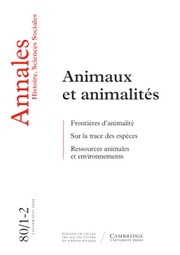Article contents
L'Aborigène, La Race et L'État Débat sur les minorités et hégémonie nationale en Australie
Published online by Cambridge University Press: 26 July 2017
Extract
Au cœur du débat sur les minorités, le statut des aborigènes australiens à l'intérieur de la communauté nationale suscite de multiples difficultés qui sont loin d'être encore résolues. Dans la version contemporaine, ce débat met aux prises des forces d'ordre historique, culturel, économique autant que politique. De là une complexité accrue des problèmes mais aussi une projection du passé lointain ou proche dans le présent avec une intensité rarement atteinte. Ce sont les différents fils de cet écheveau que je me propose de démêler et de relier ici. Écheveau d'un débat véhément, acerbe parfois, né de l'histoire et des premiers contacts entre les communautés, et dont la propriété du sol, dans la quasi-totalité de la société australienne, constitue aujourd'hui l'abcès de fixation.
Summary
This paper examines the status of Aboriginal Australians in relation to post-contact history and the development of the national Australian State. Traditional Aboriginal essentialisms of blood and land persist across this time span and define critical arenas in which cultural, economie and political aspects of the contemporary minority debate occur. The long standing silence on the role of the Aboriginal populations within this history of Aboriginal and European contact is being broken by both Aboriginals and scholars. It is argued here that blood (race), and the spirituality which Aboriginals endow to place and space—land—are traditional cultural foundations that provide the basis of Aboriginality as an ideology and a highly visible political culture. Blood is a pivotal, essential and irreductible factor in what constitutes Aboriginality; land is the source of all being and existence, and the return to ancestral lands and tracks is vital for all Aboriginal peoples. Thus, land rights issues and policies, most recently the “Marbo” decisions, are at the center of the assertion of Aboriginal identity and political activism and are manifest at local, national, and global levels, and it is local essentialisms, such as blood and land, which cernent and bind societies to their past and define their future.
- Type
- La Construction des Minorités
- Information
- Copyright
- Copyright © École des hautes études en sciences sociales Paris 1997
References
Bibliographie
- 3
- Cited by


